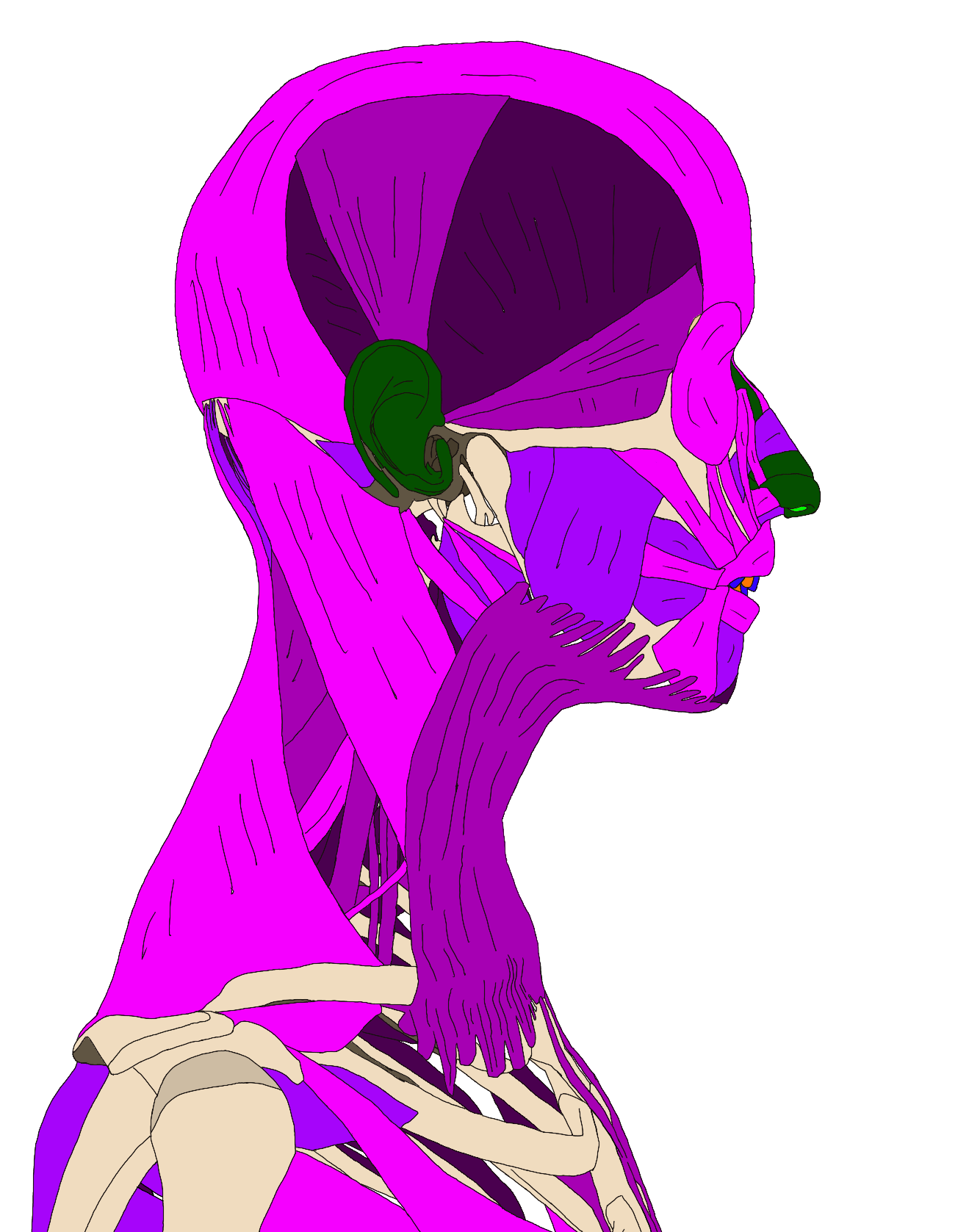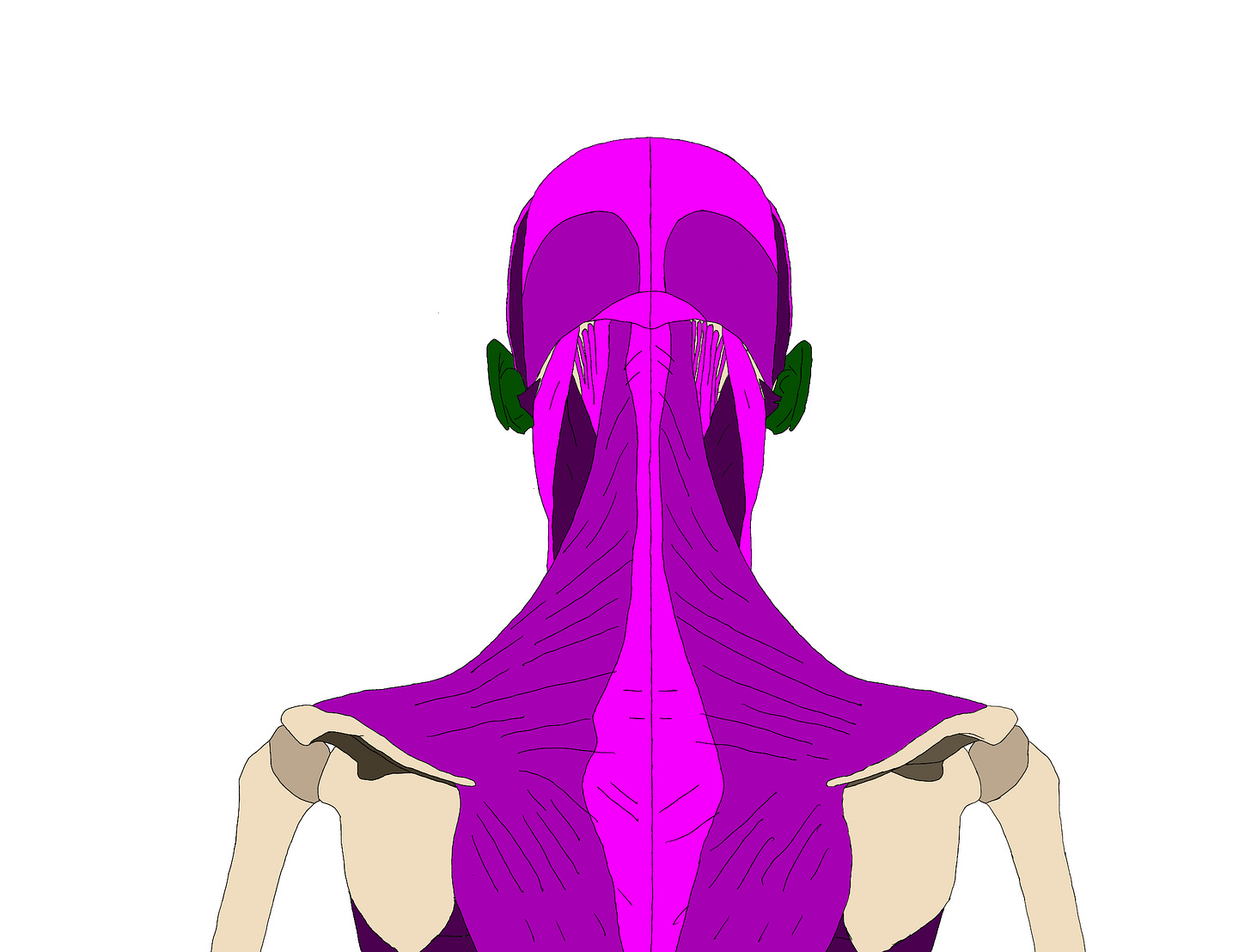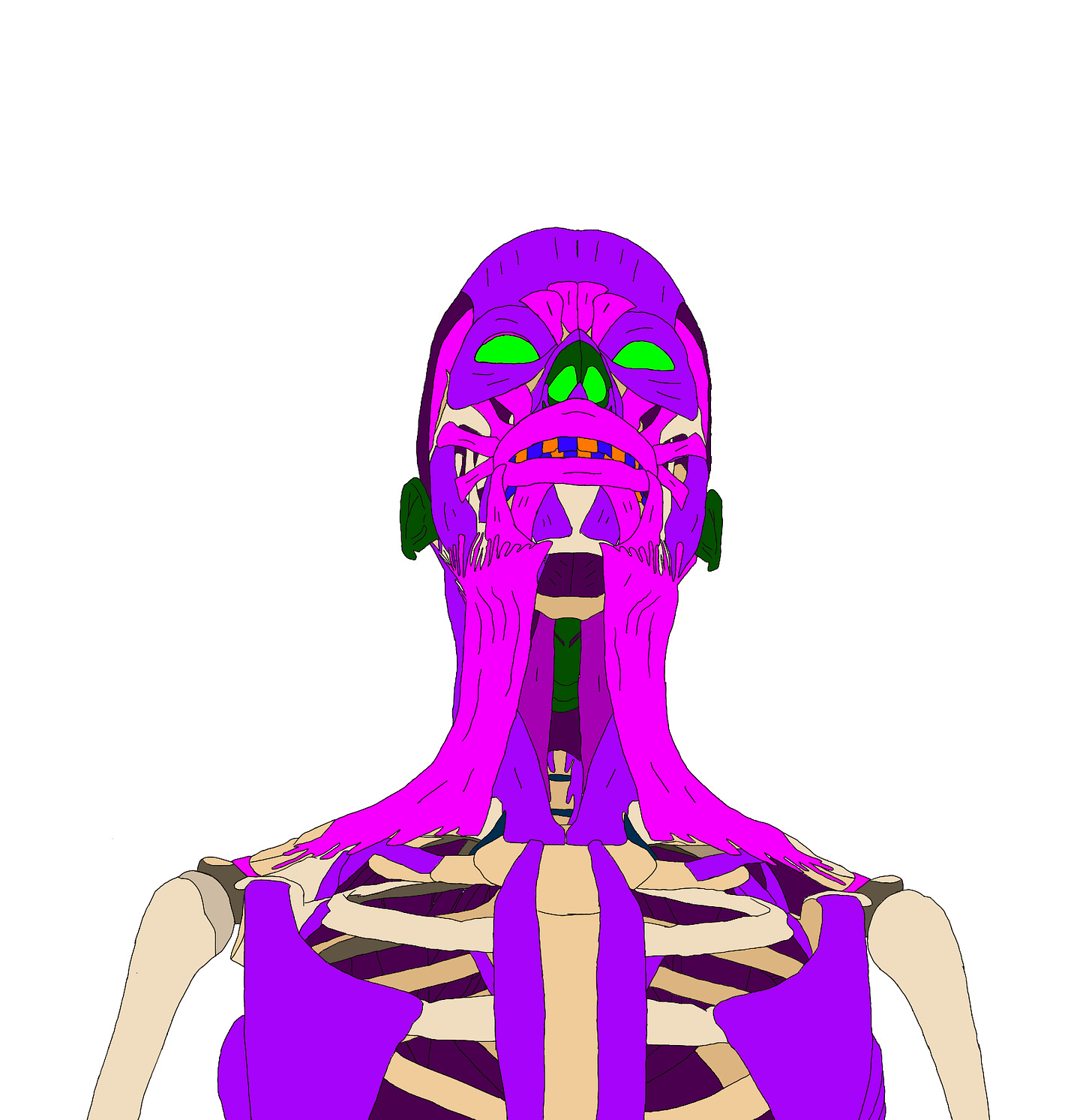The Neck : The Top Layer : ++Face
AKA A Weaver of Muscles
Welcome to a belated blog! I seem to have fallen down the rabbit hole of making anatomical drawings. I’m electing to make them myself both for fun and copyright reasons, but they do seem to take ages to make!
The Neck
I’ve written a whole slew of posts on the relationship between the head and the top vertebra of the spine. This juncture is absolutely the first zone that needs to begin freeing up if we wish to alleviate strain.1 If you’ve been following along carefully with this blog (and only using me as a source of information), I would not expect you to have a free neck AT ALL.
But I do hope that you’re beginning to get access to a freeing neck.
We All Have Layers
When we think about freeing the neck of tension, we can oftentimes get stuck. We feel things beginning to thaw, but then there’s this constipated / obstinate holding that remains in the neck. That holding can be caused by:
holding in some other part of the body
being determined to free it up RIGHT NOW and actually stiffening up to achieve our objective
not having a clear image of our full breadth and depth.
Today’s images are to help spark your imagination surrounding the breadth and depth of the neck. Part of the reason why I’m opting for a strange color palette is that I want you bear in mind that it is unrealistic to feel this stuff as individual muscles and that these are all supposed to function in some unknowable manner.
You don’t need to learn the names of these muscles, but you SHOULD be able to look at a zone and wonder if you feel stiff weight, dead weight or sprung weight there.
So without further ado, take a look at these drawings!
What Do I Mean By “Neck”?
The yellow zone below is to make it abundantly clear what region I’m talking about when I ask you to think about releasing tension from the whole neck.
What Has Been Discussed in Depth Since Aug 2024
The orange zone below is simply highlighting the region I’ve written about in greater depth for the past several months. I have not covered every fiber of the orange zone, but it’s time to move on for a bit. Learning about the rest of your neck and back will only help you find greater degrees of balance and ease in YOU.
Taking the Highlights Away
The picture above shows the top layer of muscles in the head and neck. I think it’s too small on a mobile device so I’m adding some bigger images for you to check out below. As you look over them, notice how the muscles overlay on top of one another.
You are organized with layers on top of layers!2
The Profile
The Back
The Front
Food For Thought
Nature abhors inefficiency. Each muscle that I’ve highlighted serves a purpose. In the next post (or two), I’ll start to remove the top layers of neck muscles and show you what’s under the hood. One of the things that should be clear is that not only are the muscles all layered, but the systems of the “neck”, “back”, “shoulders”, “voice”, and “breathing” are very closely layered.3
The most practical thing for you to understand is that the general use and functioning of these larger systems can work in harmony. FM Alexander writes A LOT about how he would invite his neck to free and then see if it would continue to be free when he thought about speaking. He found it extremely tricky to ask his neck to free, feel it free, and then continue with this new sensation into a more complex task like speaking or moving.
Get In Touch
Thanks for reading “The Neck : The Top Layer : ++Face“! If you’re in NYC, you may learn more about my private teaching practice at johndalto.com.
If you’d like to book any lesson time with me, you can find my booking link here.
I mean this in both the global context of your whole psychophysical self AND the anatomical region of the neck and back.
If you are seeing a bunch of empty space in these drawings, fear not! You have nerves and blood and guts and fascia and skin. They’ve gotta live somewhere!
Recall my post on Left / Right Confusion. Many people stiffen their necks and shoulders to breathe. These systems don’t need to fire simultaneously.







